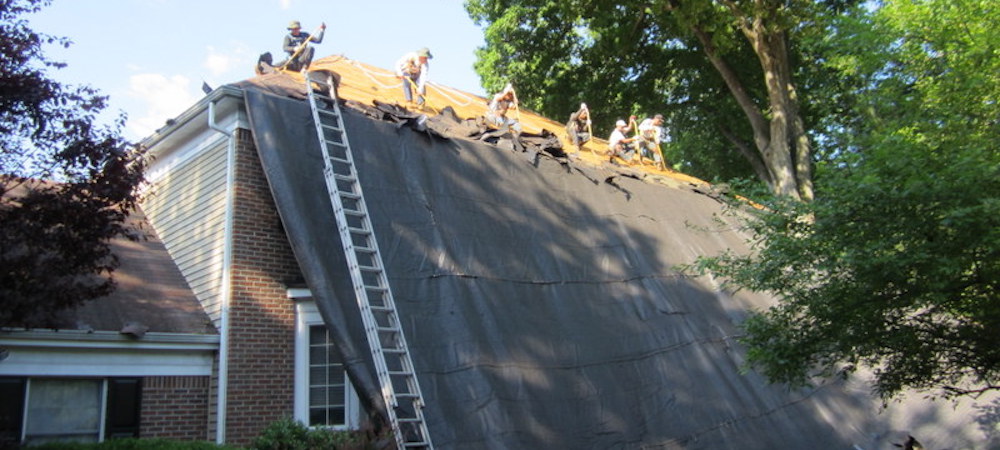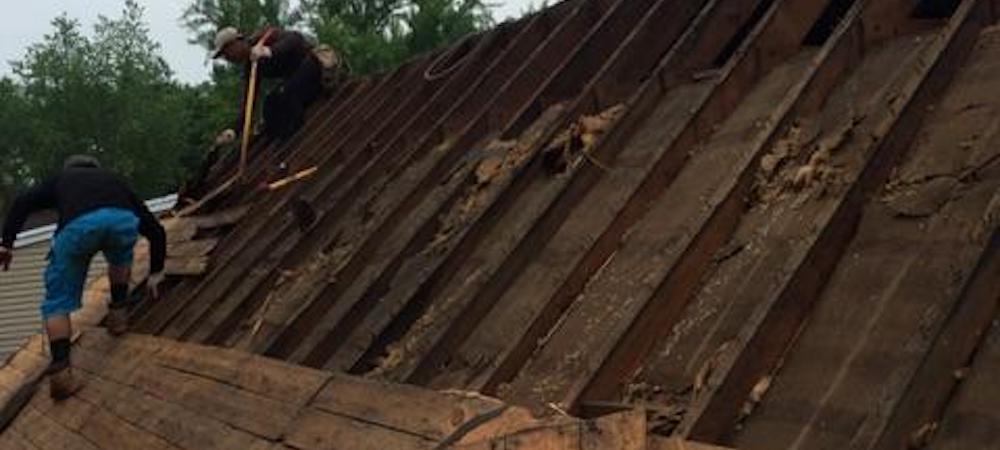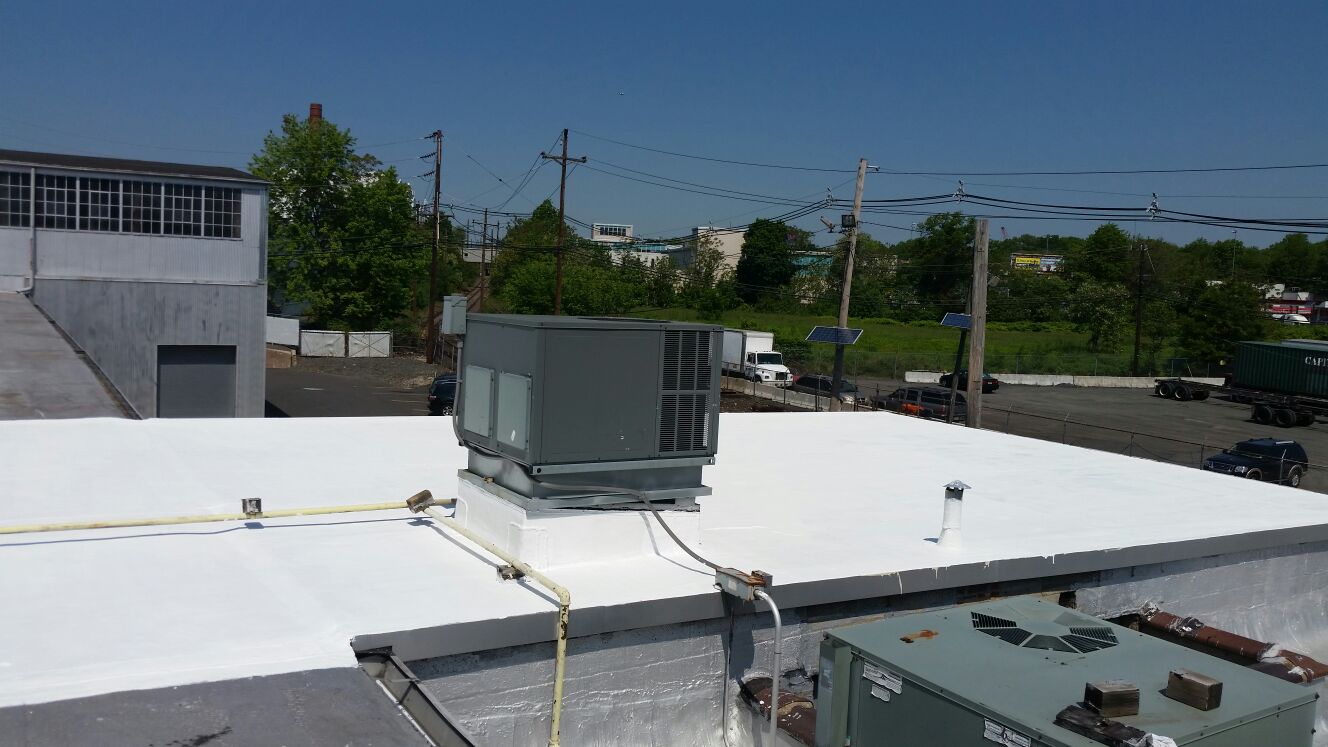In New Jersey, violent thunderstorms, blizzards and intense low-pressure systems put residential roofs to the test. High-quality materials and expert installation are very important in a state where temperature extremes range from a historic high of 110 degrees to an all-time low of minus 34 degrees.
Since roof replacements on any given home usually happen decades apart, the average homeowner does not always know about the various steps involved. A little upfront effort to learn about the process is well worth it. Once your home roof replacement is complete, you’ll enjoy what a new warrantied roof provides.
How to Prepare for a Roof Replacement
You’ll need to make some decisions before you move forward with a residential roof replacement. You’ll need to decide what kind of new roof to go with and whether the existing roofing should be torn off or not.
Decide on Type of Roofing
Although there are many different kinds of roofing, asphalt shingles are still the best value for a majority of homeowners. In fact, there are more asphalt shingle roofs installed on homes in America than all other types of roofs combined.
Homeowners choose between traditional three-tab shingles and the thicker, more three-dimensional architectural shingles. Regular three-tab shingles come in many colors and are very affordable. Architectural shingles come in many different shapes, sizes and textures. Either way, with proper installation and maintenance, modern asphalt shingles will last for many years.
Should I Tear Off Existing Shingles or Not?
If your roof already has two layers of shingles on it, local codes typically prohibit the application of a third layer. However, roofing over a single layer of old shingles is possible in some situations, but there are pluses and minuses.
Avoiding a tear-off cuts labor and landfill costs. However, the second layer of shingles adds weight, which, depending on the home, may stress the roof’s substructure. Unevenness in the old roof may also eventually cause unsightly irregularities in the new roof. The use of thicker architectural shingles often minimizes this problem.
 Preparing Your Property
Preparing Your Property
Before the crew arrives to complete your roof replacement, it is important to prepare your home inside and out. Although a capable roofing crew takes care in protecting landscaping and other exterior elements, it is wise to move planters, outdoor furniture and other items away from the roof’s perimeter.
You should also secure decorations or items on your walls that could fall due to the hammering and vibrations inevitable with roof replacements. Make sure there is nothing in your attic that could topple during the roof replacement process.
The Roof Replacement Process
In roofing, a “square” refers to 100 square feet of shingles. Typically, three or four bundles equal a square. Asphalt shingles are usually hoisted up on the roof by mechanical means.
A full home roof replacement includes these steps:
- Deliver roll-off waste containers before the job begins.
- Remove existing shingles, and deposit debris in waste containers.
- Complete minor to major repairs to the sub-roofing. When necessary, areas of rotting or deteriorating wood must be removed and replaced with exterior plywood or other appropriate material.
- Install ice and water shield, a self-adhering, rubberized product that sticks right to the underlayment. It helps to prevent moisture intrusion due to ice dams and wind-driven rain.
- Lay asphalt paper over the substructure or sheathing (unless ice and water shield is applied to the entire roof).
- Install shingles, beginning at the eaves and working your way up the roof.
- Apply flashing in valleys and at all transitions between shingles and roof protrusions (stack vents, chimneys, skylights, etc.). Flashing prevents moisture from getting into the home at these potentially vulnerable spots.
- Install ridge vents along the peaks of the roof to allow warm, damp air in the attic to escape. Ridge vents improve the energy efficiency of your home, and they extend the new roof’s lifespan.
- Complete clean-up and remove full waste containers.
In New Jersey, the prime roofing season extends from spring to fall, although dry periods with modest temperatures often extend the season well beyond that. Larger, experienced crews know how to complete roof replacements during even brief periods of decent weather.
How to Choose the Best Roof Replacement Company
When you are choosing a roofing specialist, make use of referrals, online research and references.
Direct Referrals
Home improvement contractors build their businesses as they have for decades: through “word-of-mouth” advertising. Asking around your neighborhood often yields advice from neighbors as to who the best local roofers are.
Don’t hesitate to reach out to your network of family members and friends to learn about their roofing experiences. Consider stopping by at building supply distributors in the area to learn more about the roofing contractors they regularly work with.
Online Research
Contractor websites often include testimonials from satisfied customers. You’ll also find online reviews as well.
References
Established, reputable roofing contractors are more than willing to provide references. Local references establish that a roofer is already active in your community.
Contact Us Today
CRS has built long-term relationships with New Jersey homeowners for more than 48 years. When you need a professionally installed home roof replacement, call on CRS.
We offer homeowners in Bergen, Essex and Passaic counties a full range of residential roofing services, including periodic inspections, routine maintenance and re-roofing.




